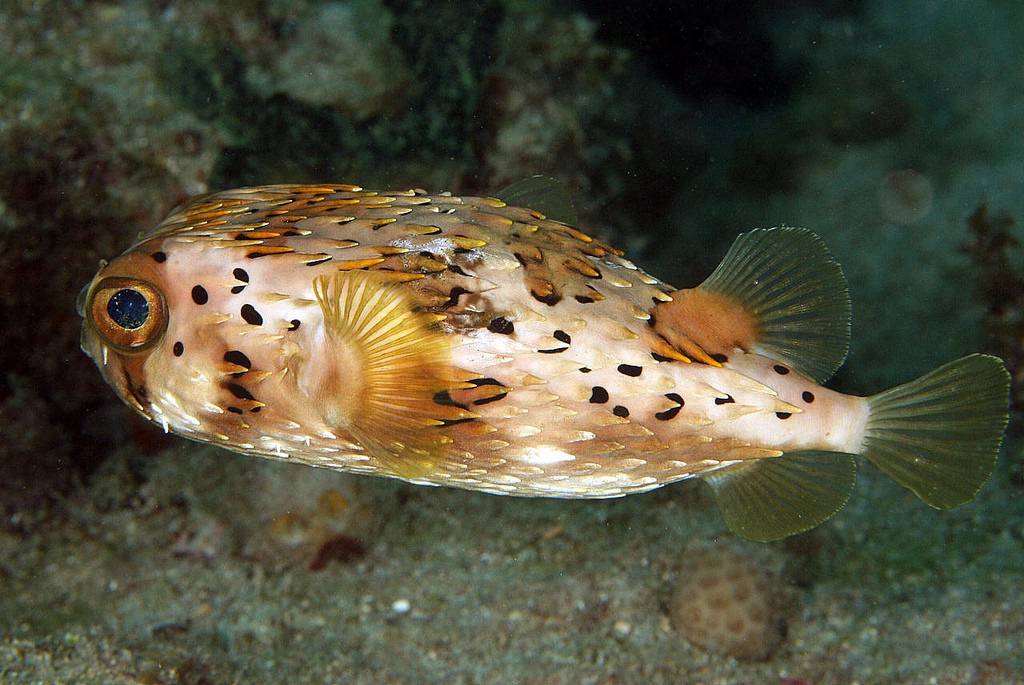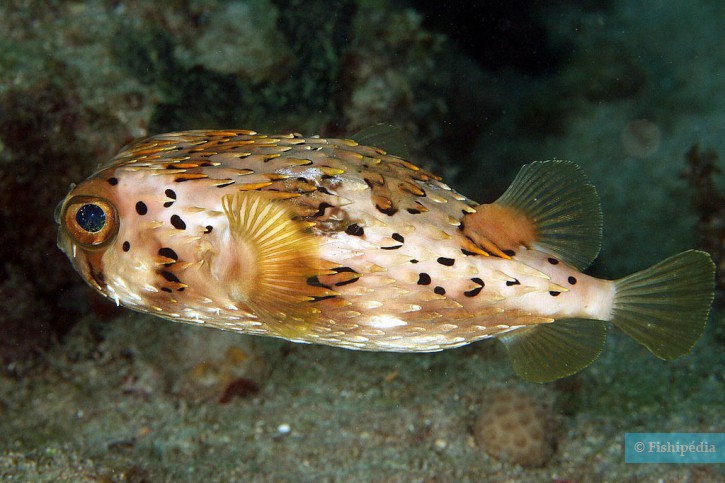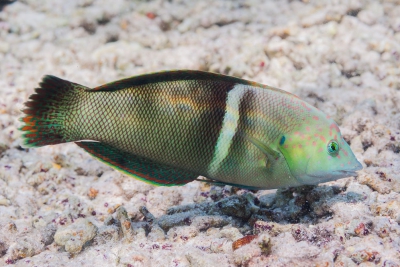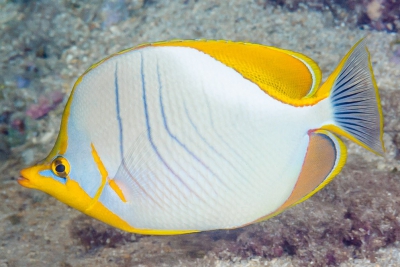long-spine porcupinefish
| Scientific name | Diodon holocanthus |
|---|---|
| Descriptor | Linnaeus |
| Year of description | 1758 |
| IUCN category (World) | LC |
| Family | Diodontidae |
| Genus | Diodon |


Introduction
Diodon holocanthus, more commonly known as the long-spine porcupinefish, is a pufferfish found in the majority of tropical and subtropical marine areas.
It is listed in the Atlantic Ocean from the US coast to the south of Brazil. It is also observed in the entire Indian Ocean, in the Indonesian and Philippine seas, in the Great Barrier Reef, in California, and around the Galápagos Islands.
Who is it?
Morphology
-
Type
-
Average size20 cm
-
Maximum size35 cm
-
ShapeBalloon and near
-
Patternmottling
-
Type
-
Average size20 cm
-
Maximum size35 cm
-
ShapeBalloon and near
-
Patternmottling
How to recognize This fish ?
This species belongs to the group of pufferfish. These fish are nicknamed like this because they have the ability to inflate themselves when they feel threatened.
To achieve this inflation, they swallow water and fill their stomach to more than double their volume. This is made possible by their stretchy skin. This subterfuge makes them look much more impressive to their predators. They are also much more complicated to swallow. This change in shape becomes a disadvantage for these fish that, once inflated, can hardly move.
This long-spine porcupinefish is bicolored with a predominantly brown-pink and beige pattern. The brown part forms irregular marbling. Juveniles have the same pattern but are also covered in black spots.
Sexual dimorphism
Morphological differences not specified.
Behaviour & Life cycle
-
dietomnivorous with carnivorous tendency
-
Sociabilitysolitary
-
territorialNo
-
Way of livingdiurnal
Tetrodotoxin or TTX is a neurotoxin produced by bacteria. In this species, it is present in large quantities in the liver, viscera and gonads but is also found in the skin.
Females are more toxic than males, this is due to the high concentration of TTX in the ovaries.
When poisoned, TTX is fatal in more than 50% of cases. This neurotoxin acts on the pores of the sodium channels, which stops the passage of nerve impulses, resulting in partial or total paralysis. Death is most often due to respiratory paralysis triggering cardiac arrest by collapse.
Juveniles can be found in small groups but become solitary as adults. This fish, specialized in hunting mollusks and small crustaceans, exhibits a rather clumsy swimming behavior.
In general, it is an independent fish that pays little attention to other fish species.
Reproduction
-
Reproductionovipare qui pond sur substrat découvert
The long-spine porcupinefish is an oviparous fish that lays eggs on exposed substrate.
Harmless species
This species does not represent any particular threats to humans when encountered in its natural environment.
Origin and distribution

What is its habitat?
Natural environment characteristics
-
Temperature25 - 30 °C
-
Depth2 - 35 m
-
FlowMedium and Slow
Biotope presentation
This species is most commonly found between 2 and 35 meters, but it has been sighted at much greater depths (200 meters). It frequents reef and coral areas as well as sandy banks and rocks. Juveniles are pelagic.
Species of the same biotope
Fishkeeping
Not recommended
We do not recommend keeping this species in an aquarium. It has unpredictable needs which, if not met, generate significant stress, potentially leading to a shorter life expectancy, an interruption of its growth or the development of pathogens.
To go further
Sources & Contributions
Participation & Validation
The Fishipedia team and specialist contributors are committed to providing high-quality content. However, although the information comes from scientific sources or testimonials from specialists, the cards may contain inaccuracies.

Benoit Chartrer

Patrick Chartrer
Translation
Translation done with the valuable contribution of our translators, who make this information available to a wider audience. We sincerely thank them for their commitment.
Scientific partners
Tags
#Diodontidae
#Diodon
#barrière de corail
#herbier
#lagon
#tombant
#pufferfish
#Gulf of Mexico
#Persian Gulf
#Great Barrier Reef
#mer d'Oman
#Caribbean Sea
#Philippine Sea
#Sea of Japan
#Red Sea
#South East Asian Seas
#Indonesian seas
#Atlantic Ocean: North Coast of Brazil
#Océan Atlantique Est Afrique - Angulhas
#Océan Atlantique Est Afrique - Golfe de guinée
#Océan Atlantique Est Afrique - Transition & Cap Vert
#Northwest warm temperate Atlantic Ocean
#Southwest warm temperate Atlantic Ocean
#Eastern tropical Atlantic Ocean
#Southwest Tropical Atlantic Ocean
#western Indian Ocean
#Galapagos
#Océan Pacifique Nord Est Tempere Chaud
#Océan Pacifique sud-est tempéré chaud
#Tropical Eastern Pacific
#Western Tropical Pacific Ocean
#Bali
#Mauritius
#Réunion
#Lombok
#Maldives
#Nusa Penida
Same genus
Species of the same biotope




























